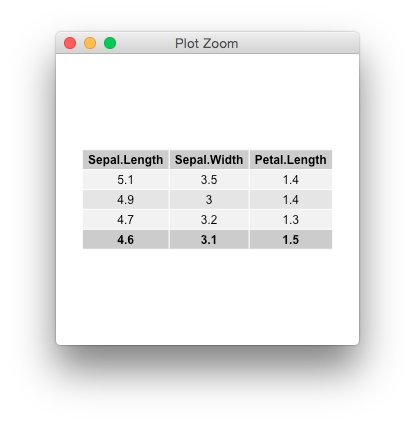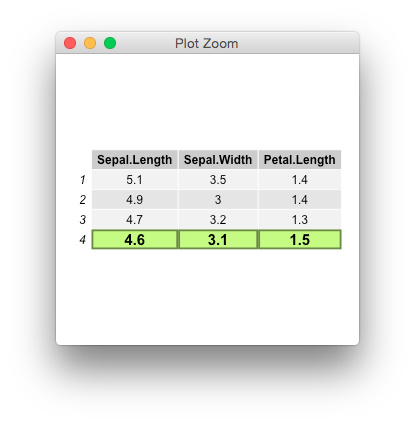I have some relatively simple code to create a table for printing to a PDF:
library(gridExtra)
df <- head(iris)
tableGrob(df, gp = gpar(fontsize = 8), rows = NULL)
I'd like to make the last row the same format as the header row (bold, and darker gray background). I understand I can use gpar to control format of the entire table, but not sure how to just affect the last row.
Thanks!



